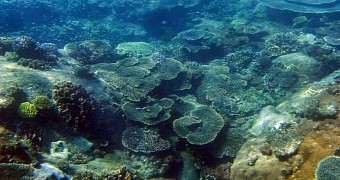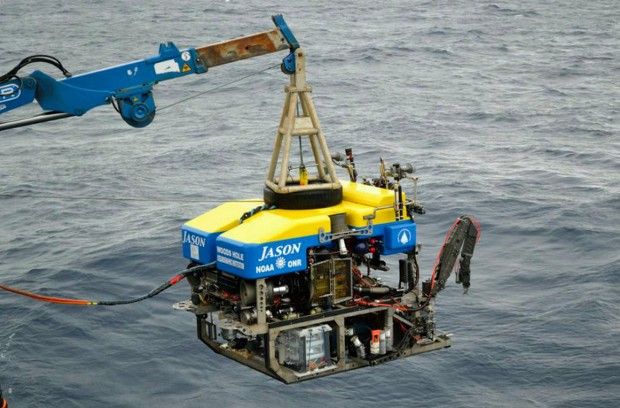A study published in the journal Frontiers in Microbiology earlier this week announces the discovery of several different microbe species that live under the ocean crust and that might be some of the absolute toughest little fellows ever to inhabit our planet.
The microbes, which researchers are yet to study in detail, classify and name, call mammoth networks of channels in porous rocks sitting beneath the ocean their home. What makes them newsworthy is the fact that, unlike land microorganisms of their kind, they breathe not oxygen but sulfate.
The microbes are perfectly adapted to life under the sea
Scientists with the University of Southern California and the University of Hawaii explain that, just like the microbes that populate forest floors on land, these teeny tiny daredevils that were discovered not too long ago under the ocean crust feed on organic matter.
Specifically, their job is to break down whatever dead marine dwellers, algae and other organisms reach them. To break down lifeless animals and plant material, land microbes rely on oxygen to jump-start and support the chemical reactions that they rely on to feed.
Under the ocean crust, however, there really isn't all that much oxygen to go around. Hence, the newly discovered microbes were left with no choice but to find help someplace else. In a nutshell, they evolved to use sulfate to break down decaying biological material.
Mind you, these fellow aren't the only microorganisms thus far documented to breathe sulfate. As detailed in the journal Frontiers in Microbiology, such microbes counted themselves among the first life forms ever to populate Earth, and similar species currently inhabit hydrothermal vents and marshes.
As mentioned, the newly discovered microbes are found in networks of channels formed by porous rocks sitting at the bottom of the ocean. These networks are referred to as undersea aquifers and are estimated to hold about 30% of our planet's biomass.
How does one find microbes at the bottom of the ocean?
The researchers who discovered these previously undocumented microbe species under the ocean crust say that, to find them, they collected and analyzed rock samples from the Juan de Fuca Ridge, a tectonic spreading center located off the coast of Washington, US.
To obtain these samples, the researchers lowered a drill to a depth of about 2 miles (3.2 kilometers). They then used this drill to reach undersea aquifer rocks resting beneath the ocean crust and break them apart. Some of the rock fragments obtained in this manner were recovered and brought to the surface.
“Trying to take a sample of aquifer water without contaminating it with regular ocean water presented a huge challenge,” researcher Jan Amend with the University of Southern California wished to point out.

 14 DAY TRIAL //
14 DAY TRIAL // 

